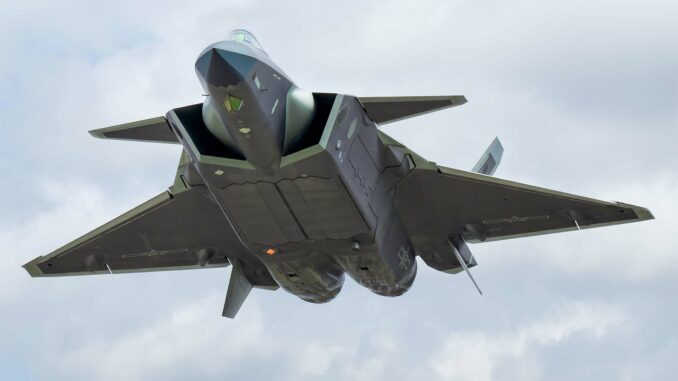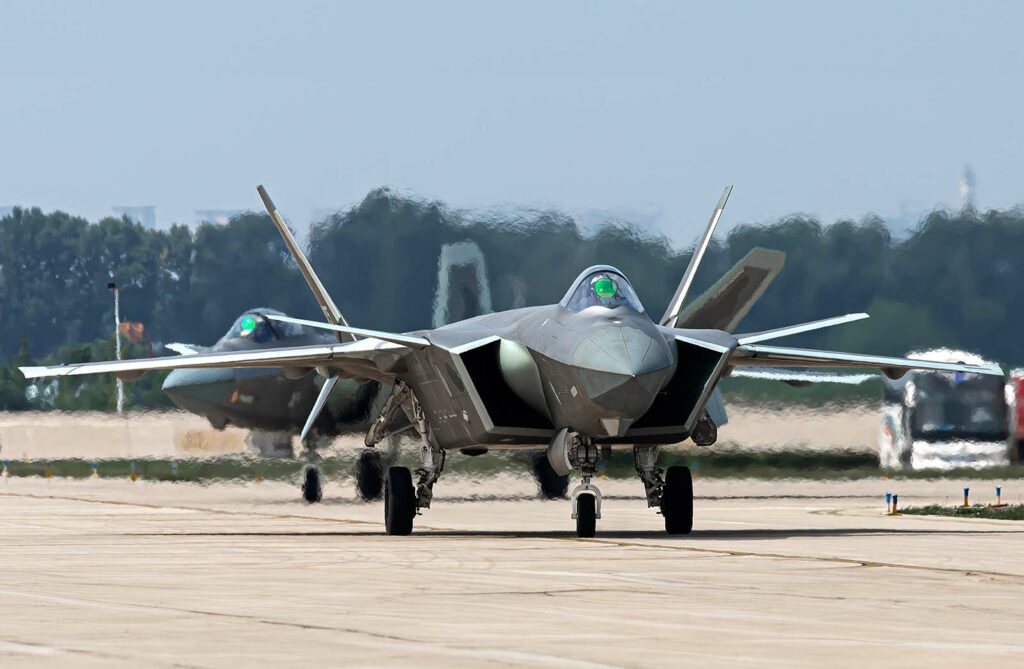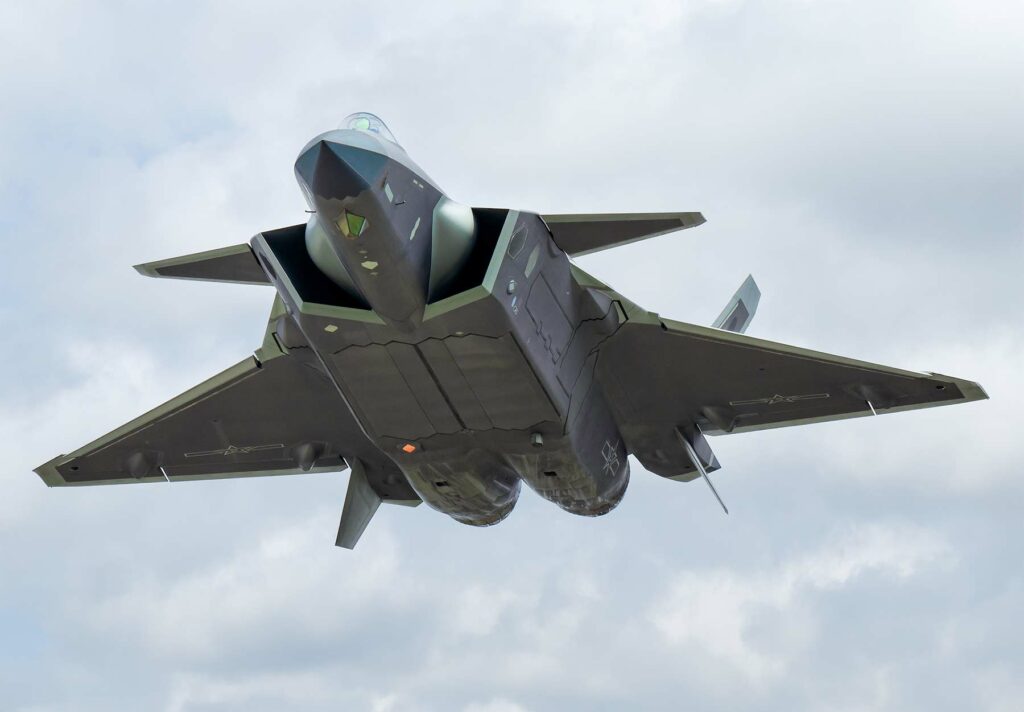
In the realm of modern military aviation, the development of the J-20, China’s first fifth-generation fighter jet, marks a significant milestone. This stealth air superiority fighter, developed by Chengdu Aerospace Corporation, represents a bold step by China to modernize its military capabilities and assert its place in the global arena.

Development and Context
The development of the J-20 began in the early 2000s, with the first prototype taking flight in January 2011. The project was shrouded in secrecy, but it’s clear that its development was driven by China’s desire to bridge the technological gap with leading air powers, particularly the United States, which had already developed fifth-generation fighters like the F-22 Raptor and the F-35 Lightning II.
The J-20’s development must be viewed within the broader context of China’s military modernization program, which aims to transform the People’s Liberation Army (PLA) into a modern, agile force capable of projecting power and countering American and allied military capabilities in the Asia-Pacific region.
Purpose and Role
The J-20 is primarily designed for air superiority with secondary ground attack and electronic warfare capabilities. It is a twin-engine, all-weather fighter that can operate in a wide range of combat scenarios. The aircraft’s role is multifaceted: it is intended to penetrate enemy air defenses, engage with advanced enemy fighters, and protect China’s strategic assets.
Performance Specifications
The J-20 boasts an impressive array of features and specifications:
- Dimensions: It is approximately 20.4 meters (67 feet) long, with a wingspan of 12.88 meters (42.2 feet).
- Speed: The J-20 is capable of achieving speeds up to Mach 2 (approximately 2,470 km/h or 1,535 mph).
- Range: It has a combat radius of around 1,100 to 1,500 kilometers (684 to 932 miles), extendable with in-flight refueling.
- Stealth: Featuring a stealthy design with an internal weapons bay, the J-20 minimizes its radar cross-section to evade detection.
- Armament: It is equipped with a variety of air-to-air and air-to-ground missiles and has provisions for laser-guided bombs.
Reaction from the USA and the West
The unveiling of the J-20 caused significant concern in the West, particularly in the United States. The fighter jet is seen as a direct competitor to Western fifth-generation fighters, highlighting China’s growing technological prowess. The U.S. and its allies have been closely monitoring the development and deployment of the J-20, leading to discussions about enhancing their own military capabilities and strategies in the Indo-Pacific region.
Current Use and Combat Status
As of now, the J-20 has been inducted into the PLA Air Force and is gradually becoming an integral part of China’s air power. However, there are no confirmed reports of the J-20 having seen actual combat. Its current use is primarily centered around training, exercises, and gradually increasing its operational deployment within China’s air defense infrastructure.

Additional Information
- Engine Development: One of the major challenges for the J-20 has been developing a reliable and powerful enough engine. Initially, it relied on Russian engines, but there has been a significant push to develop indigenous engines to achieve better performance and reduce dependence on foreign technology.
- Electronic Warfare and Sensors: The J-20 is equipped with advanced avionics, including AESA (Active Electronically Scanned Array) radar, which provides a significant edge in terms of situational awareness and electronic warfare capabilities.
- Comparison with Rivals: While the J-20 is often compared to the F-22 and F-35, direct comparisons are difficult due to the secretive nature of the program and the lack of detailed public information about its capabilities.
- Export Potential: Currently, the J-20 is not offered for export, reflecting China’s desire to keep this advanced technology exclusive to its military.
- Future Developments: There is ongoing speculation about future variants of the J-20, possibly including enhanced stealth features, improved engines, and more advanced avionics and weapons systems.
The J-20 represents a significant leap in China’s military aviation capabilities. It symbolizes China’s growing confidence and ambition on the world stage, particularly in the realm of aerospace technology. While the full capabilities and potential of the J-20 remain partly unknown, its development and deployment undoubtedly have far-reaching implications for global military balance and regional security dynamics in the Asia-Pacific region.